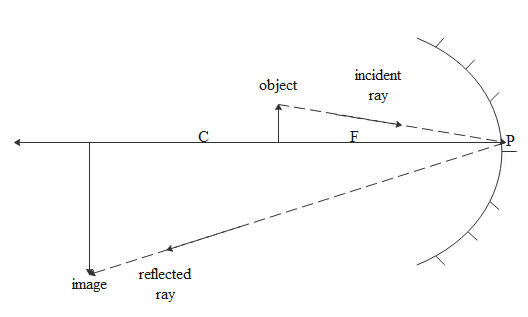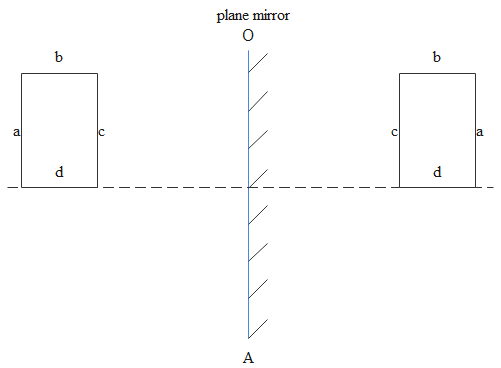
Identify the type of mirror for the following images formed. ( concave, convex or plane mirror)
A. Image is real
B. Image is virtual and enlarged
C. Image is virtual and diminished
D. Image is virtual and same size as object
Answer
556.5k+ views
Hint: In case of mirrors usually there are three types used. Plain mirror, concave mirror and convex mirror. All will serve different purposes. Properties of different mirrors are different. In case of convex mirrors they always form virtual images. While concave mirrors form both virtual and real images and plain mirrors form virtual images. Inverted image in the sense it is real.
Complete answer:
Various positions of placing an object in front of the concave mirror gives us various positions of images.If an object is placed between the pole and focus of the concave mirror then image will be formed on the other side of the mirror. That image formed will be enlarged and virtual

Now if we place objects between focus and center then the image is formed away from the center and the image will be real and inverted. The size of the image will be bigger than an object as shown in the diagram above.
C is center and F is focus while P is the pole.
If we place the object away from the center then the image formed will be between center and focus. That image will be real and inverted and diminished.
For the case of plain mirror the image formation will be like below

Image formed will be virtual and of the same size as the object.
For convex mirror the image formed is always virtual and diminished
Hence as discussed concave mirror can form both real and virtually enlarged images and convex mirror forms only virtual diminished images and plane mirror always forms virtual images of the same size as objects.
So for A and B its concave mirror and for C it is convex and for D its plain mirror
Note:
In case of plane mirrors the magnification is always one i.e size of image will always be equal to size of an object let it be longitudinal size or the lateral size. Real image can never be formed by the plane mirror that’s why the image formed by the plane mirror can’t be caught on the screen. Real images can be formed by a concave mirror though.
Complete answer:
Various positions of placing an object in front of the concave mirror gives us various positions of images.If an object is placed between the pole and focus of the concave mirror then image will be formed on the other side of the mirror. That image formed will be enlarged and virtual

Now if we place objects between focus and center then the image is formed away from the center and the image will be real and inverted. The size of the image will be bigger than an object as shown in the diagram above.
C is center and F is focus while P is the pole.
If we place the object away from the center then the image formed will be between center and focus. That image will be real and inverted and diminished.
For the case of plain mirror the image formation will be like below

Image formed will be virtual and of the same size as the object.
For convex mirror the image formed is always virtual and diminished
Hence as discussed concave mirror can form both real and virtually enlarged images and convex mirror forms only virtual diminished images and plane mirror always forms virtual images of the same size as objects.
So for A and B its concave mirror and for C it is convex and for D its plain mirror
Note:
In case of plane mirrors the magnification is always one i.e size of image will always be equal to size of an object let it be longitudinal size or the lateral size. Real image can never be formed by the plane mirror that’s why the image formed by the plane mirror can’t be caught on the screen. Real images can be formed by a concave mirror though.
Recently Updated Pages
Basicity of sulphurous acid and sulphuric acid are

Master Class 12 Business Studies: Engaging Questions & Answers for Success

Master Class 12 Economics: Engaging Questions & Answers for Success

Master Class 12 English: Engaging Questions & Answers for Success

Master Class 12 Maths: Engaging Questions & Answers for Success

Master Class 12 Social Science: Engaging Questions & Answers for Success

Trending doubts
What are the major means of transport Explain each class 12 social science CBSE

Which are the Top 10 Largest Countries of the World?

Draw a labelled sketch of the human eye class 12 physics CBSE

How much time does it take to bleed after eating p class 12 biology CBSE

Explain sex determination in humans with line diag class 12 biology CBSE

Differentiate between homogeneous and heterogeneous class 12 chemistry CBSE




